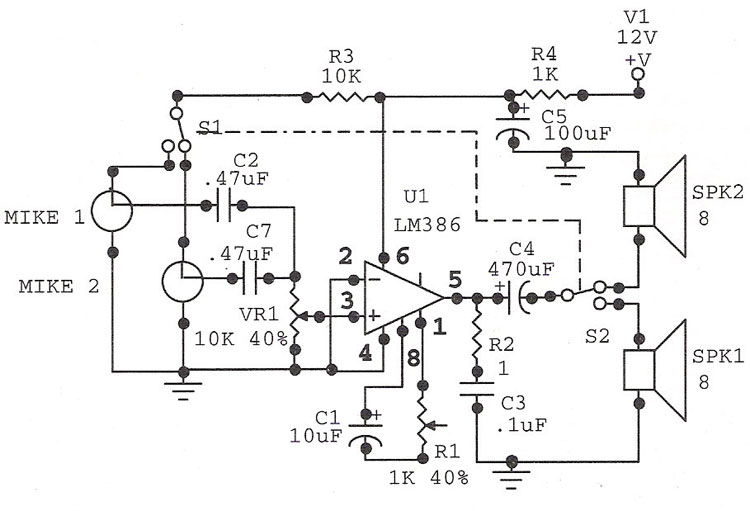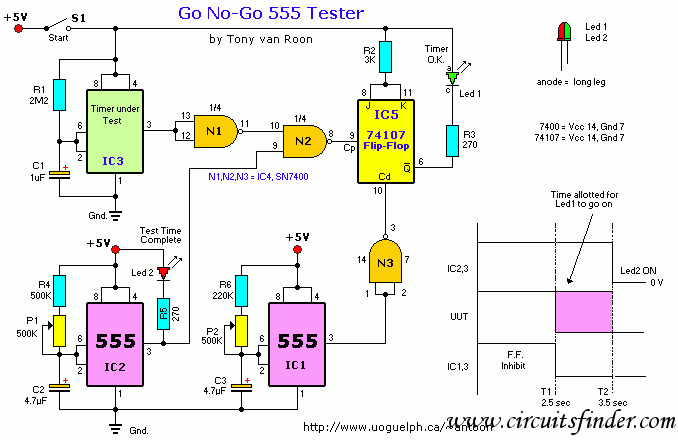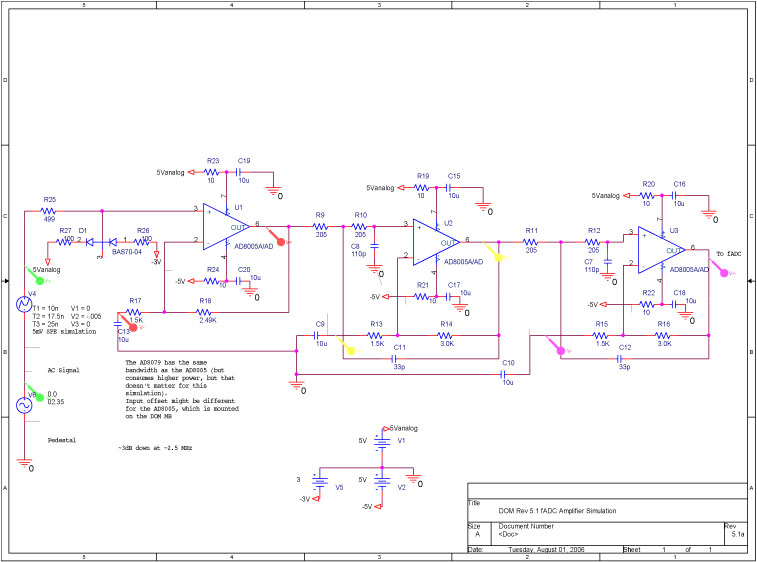
Door Phone circuit

The LM386 is an ideal choice for a door phone application. This device is particularly beneficial in modern urban households, utilizing a condenser microphone and a speaker.
The LM386 is a low-voltage audio power amplifier that is commonly used in various audio applications, including door phone systems. Its compact size, ease of use, and low power consumption make it suitable for integration into door phone circuits. The device operates on a supply voltage ranging from 4 to 12 volts, allowing it to be powered by standard battery sources or low-voltage power supplies.
In a typical door phone configuration, the circuit would include a condenser microphone that captures sound from visitors at the door. The microphone converts sound waves into an electrical signal, which is then amplified by the LM386. The output of the LM386 can be connected to a small speaker or buzzer, allowing the user to hear the visitor's voice clearly.
To enhance functionality, additional components such as resistors and capacitors may be included in the circuit design. For instance, a bypass capacitor can be connected to the power supply pin of the LM386 to filter out noise and improve sound quality. A potentiometer may also be added to adjust the volume level of the output sound.
Furthermore, the circuit can be designed to include a push-button switch that activates the door phone when pressed, providing a simple user interface. This switch can be connected in series with the microphone and amplifier circuit, ensuring that the system is only active when needed, thereby conserving power.
Overall, the LM386-based door phone system offers a practical solution for communication at entry points in urban households, combining functionality with ease of installation and operation.Door Phone , LM 386 is just right for a door phone application. It is very useful application in the present urban households. One condenser microphone and a speake.. 🔗 External reference
The LM386 is a low-voltage audio power amplifier that is commonly used in various audio applications, including door phone systems. Its compact size, ease of use, and low power consumption make it suitable for integration into door phone circuits. The device operates on a supply voltage ranging from 4 to 12 volts, allowing it to be powered by standard battery sources or low-voltage power supplies.
In a typical door phone configuration, the circuit would include a condenser microphone that captures sound from visitors at the door. The microphone converts sound waves into an electrical signal, which is then amplified by the LM386. The output of the LM386 can be connected to a small speaker or buzzer, allowing the user to hear the visitor's voice clearly.
To enhance functionality, additional components such as resistors and capacitors may be included in the circuit design. For instance, a bypass capacitor can be connected to the power supply pin of the LM386 to filter out noise and improve sound quality. A potentiometer may also be added to adjust the volume level of the output sound.
Furthermore, the circuit can be designed to include a push-button switch that activates the door phone when pressed, providing a simple user interface. This switch can be connected in series with the microphone and amplifier circuit, ensuring that the system is only active when needed, thereby conserving power.
Overall, the LM386-based door phone system offers a practical solution for communication at entry points in urban households, combining functionality with ease of installation and operation.Door Phone , LM 386 is just right for a door phone application. It is very useful application in the present urban households. One condenser microphone and a speake.. 🔗 External reference





